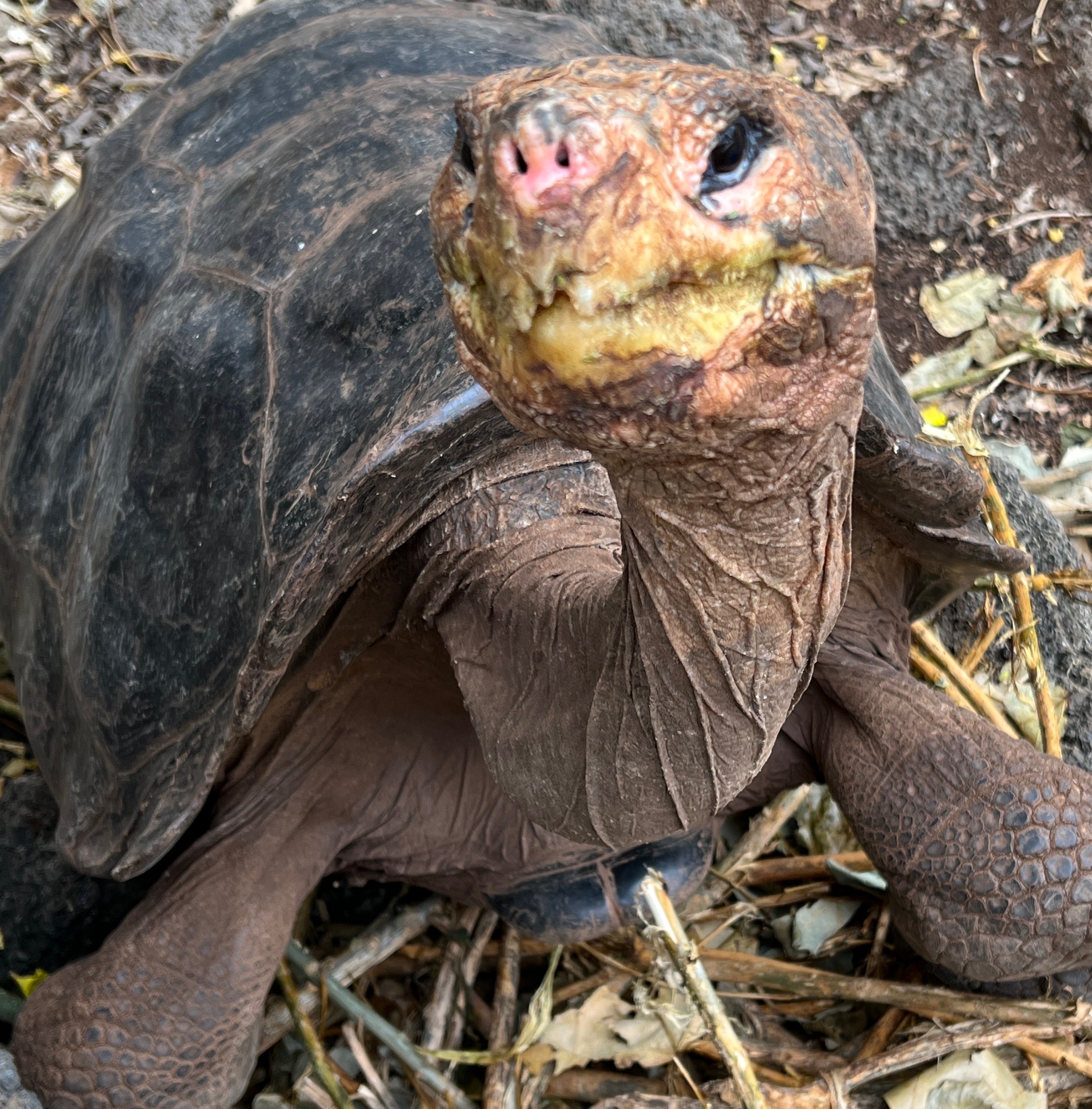Our last full day on the cruise was indeed a whirlwind. We all disembarked to the island of Santa Cruz, the most populated island of the four inhabited islands in the archipelago. The entire population of Galapagos is about the size of our town’s, Fairhaven, MA at about 20,000.
The main city, Puerto Ayora, is quite cosmopolitan for being in the middle of nowhere. Hotels, restaurants, banks, shops (some quite high end), grocery stores as well as an open-air fish market and produce markets. The sea lions are like pigeons here, just a bit harder to move out of the way. And we never knew when an iguana would just appear.
Puerto Ayora is also the home of the Charles Darwin Station and Giant Tortoise Breeding Center, which was our first stop.
The giant tortoises have many subspecies. The whalers significantly diminished the tortoise population by capturing so many as a food source on their long journeys. Giant tortoises don’t need to eat or drink for many months, so the whalers considered them a perfect food, but if the whalers found they were overloaded and needed to shed weight from their ships they would dump the tortoises, sometimes leaving them on other islands where they either had no food source or mating opportunities. El Ninos also assisted in the decline, so the breeding center is focused on repopulating the giant tortoises to their islands. According to Galapagos.org Giant Tortoises in the Galápagos Islands have been the focus of one of the most successful endangered species rewilding efforts in history. Over the last 60 years, more than 9,000 have been reared in captivity and released to the wild to reverse the decimation of populations caused by centuries of exploitation. Despite this progress, today’s Giant Tortoise populations are still just 10% of their historical numbers and occupy only 35% of available habitat.
Each baby tortoise has a number painted on its back to signify on which island it belongs, and once grown to an age of at least 5 years old when it is more likely to survive on its own it is returned to its island. We saw many stages of growth, including adult saddleback tortoises with their incredible long necks.
We also heard the very sad story of Lonesome George, the last remaining Pinzon Island tortoise. When he died in 2012 the world lost a subspecies of giant tortoise. You can read his story here: Lonesome George
One thing I’d like to point out in the slideshow – the portrait of Charles Darwin at the Darwin Station is made up of tiny photographs of Galapagos fauna; a fitting tribute to the man. And on our walk back to town we saw a sculpture made from refuse found in the sea, a sad commentary on our disposable culture.
We then took part in a reforestation project, planting scalesia trees in the Santa Cruz highlands. The scalesia has been crowded out by invasive species, and is the nesting tree of the vermillion flycatcher. So we did our part and planted 4 saplings.
Our next stop was El Manzanillo Ranch, where we enjoyed an al fresco lunch and a folkloric dance performance, with some of the dancers as young as four years old. Some of the dancers performed while balancing dolls with water-filled bases on their heads. They were very talented.
After lunch we donned rubber boots for a walk through the property, which is also a giant tortoise preserve. We were able to take photos with these amazing creatures, as long as we stayed out of sniffing distance. We were also able to see a passion fruit tree, considered a nuisance plant in Galapagos, and its beautiful flower and fruit. On the way out of the ranch the bus driver had to slow down and creep around several slow moving tortoises crossing the road.
Our last night on the ship we enjoyed a slideshow of the week’s photos taken by the naturalists, and a good night’s sleep after a long and busy day.
Next up – Our Last Day on Galapagos



Leave A Comment